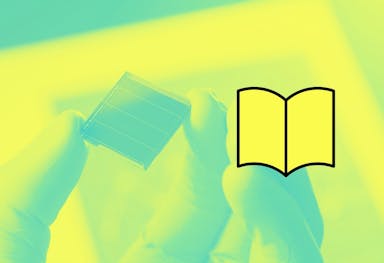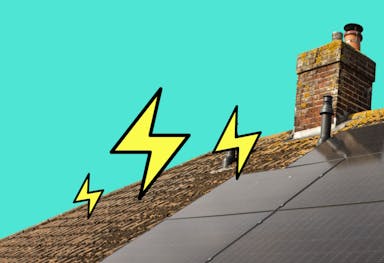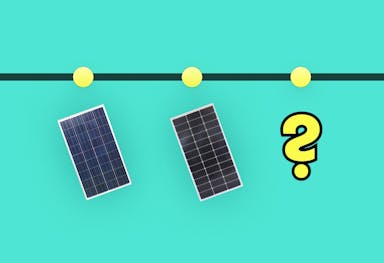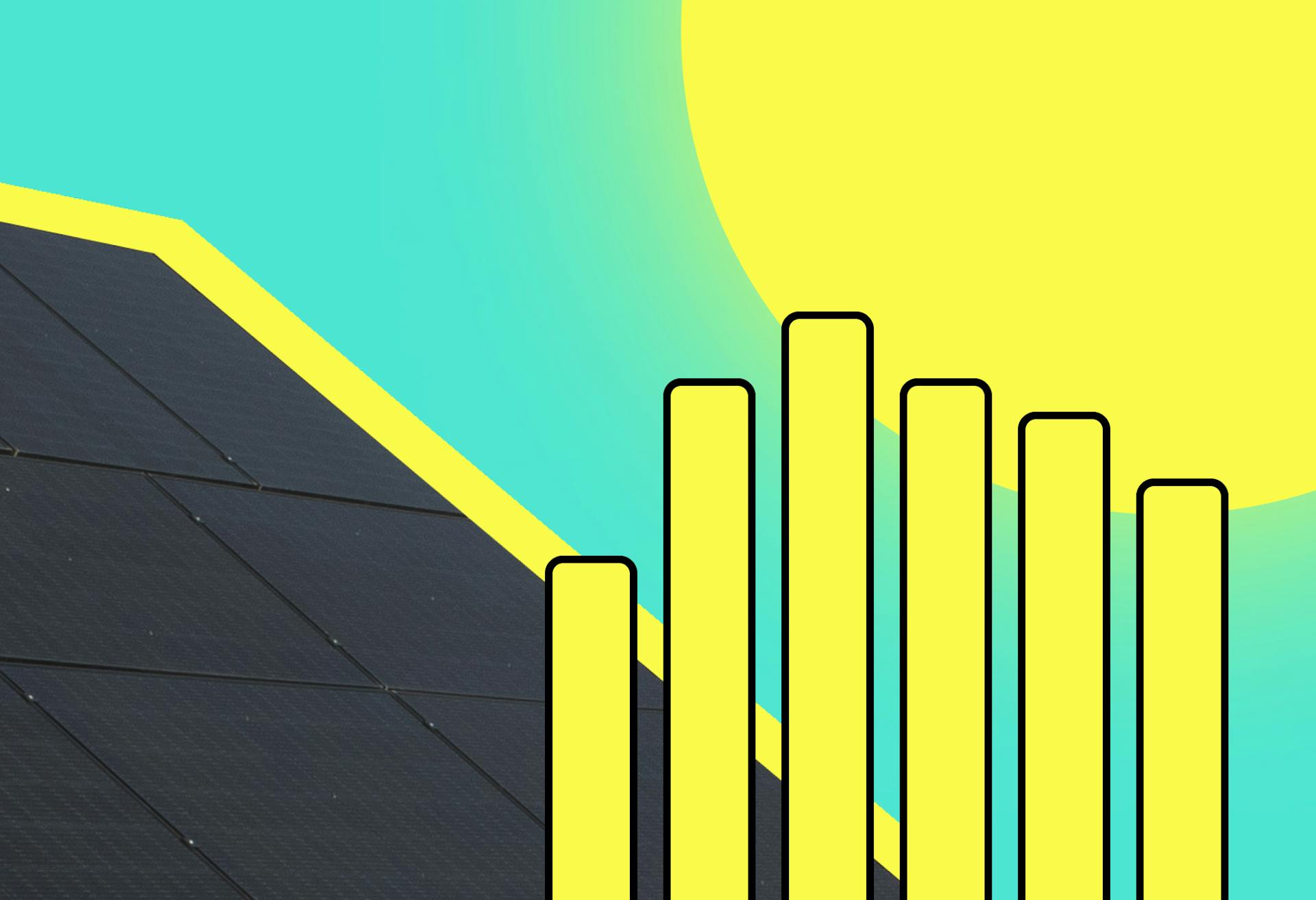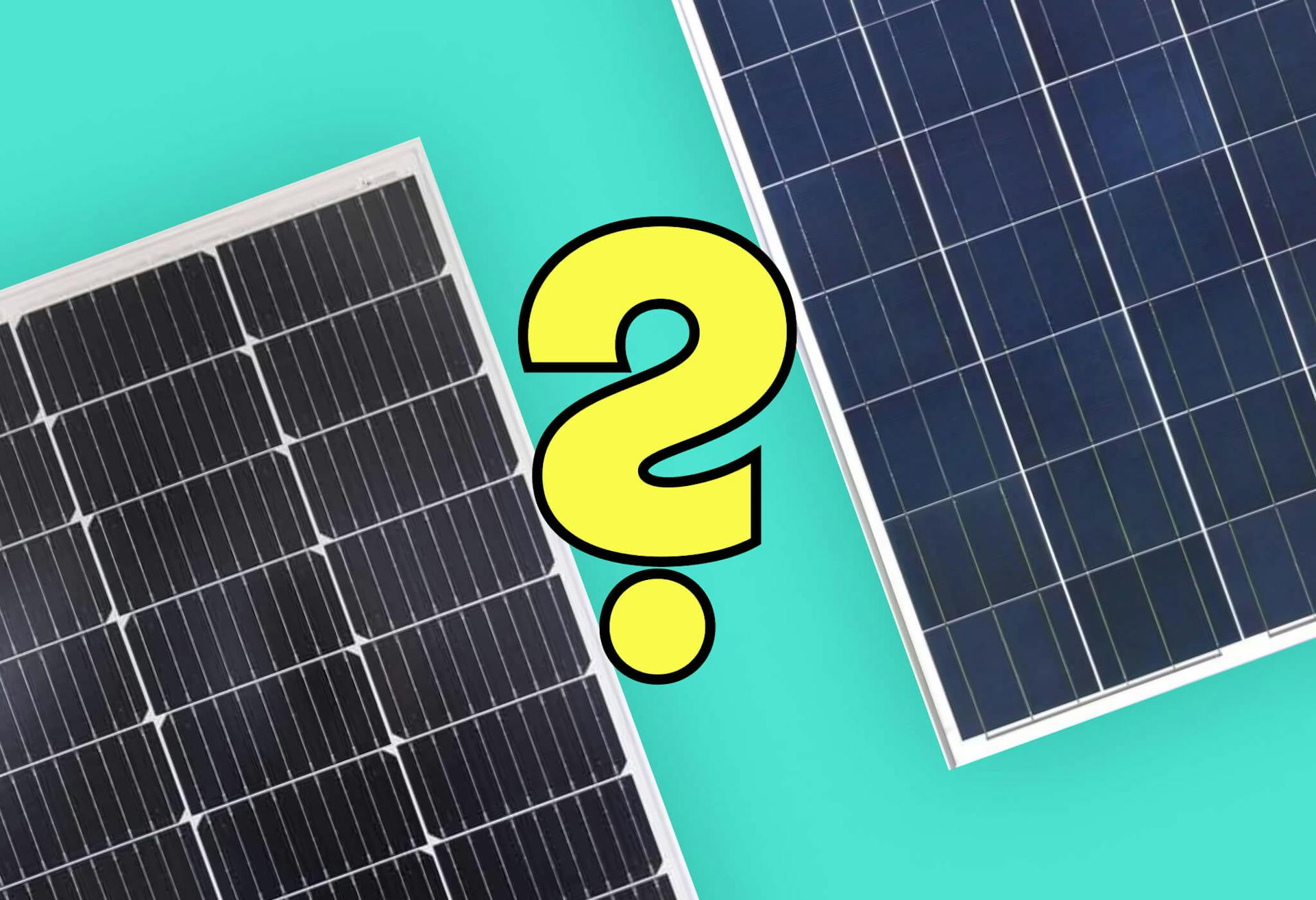- Solar advice hub
- Solar-technology
- The 11 most efficient solar panels
The 11 most efficient solar panels
Here are the most efficient solar panels on the market, with all the analysis you need to pick the best model for your home.


Why you can trust our content
We know that the solar industry is full of misinformation, but we only use reliable sources, including:
- Our experienced solar experts, installers and system designers
- Our own database of solar & battery system designs
- Authoritative bodies like MCS and the UK government



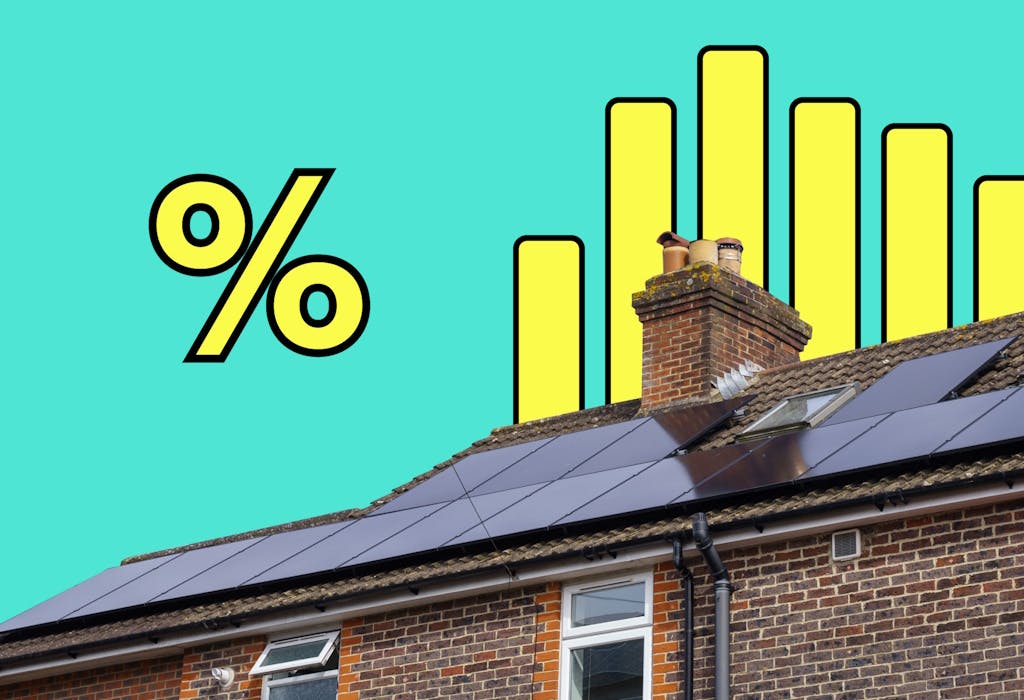
Calculate savings
What kind of home do you live in?
Calculate savings
What kind of home do you live in?
At a glance
When you’re getting rooftop solar panels, you want to make the most of the space you have.
The more efficient your panels are, the more they’ll produce, and the lower your electricity bills will be – though there are other factors to consider before making your final decision.
Efficiency is important, but so is a panel’s affordability, durability, and power rating. In this guide, we’ll explain the significance of all these elements, as well as counting down the most efficient models on the market right now.
If you’re wondering how much you could save with an efficient solar & battery system, enter a few details below and we’ll provide an estimate.
Find out how much you can save
What kind of home do you live in?
What are the most efficient solar panels?
The most efficient solar panels include RECOM's Black Tiger RCM-700-RDBRCN, AIKO's Neostar 3P54, Belinus's GAIA, and LONGi's Hi-MO S10.
All of these are made by some of the largest solar manufacturers in the world.
| Manufacturer | Name of panel | Efficiency | Power rating (W) |
|---|---|---|---|
| RECOM | Black Tiger RCM-700-RDBRCN | 25% | 700 |
| AIKO | Neostar 3P54 | 25% | 500 |
| Belinus | GAIA | 25% | 510 |
| LONGi | Hi-MO S10 | 25% | 510 |
| JinkoSolar | Tiger Neo 3.0 | 24.8% | 670 |
| Talesun Solar | CIPRO-TN9C72M(H) | 24.8% | 670 |
| Huasun | EVEREST G12R | 24.77% | 669 |
| Canadian Solar | New N-type High Power 182 Pro | 24.4% | 660 |
| SunPower | TCL Solar E Class HSM-BD72-GC660 | 24.4% | 660 |
| Grand Sunergy | GSM-MH3/132-BHDG750 | 24.14% | 750 |
| DAS Solar | D-Matrix (NE) | 24.1% | 650 |
The most efficient solar panels can convert the highest amount of naturally occurring light into electricity.
You’ll see this ability shown as a percentage – so if a solar panel is 22% efficient, that means it can turn 22% of the natural light that hits it into electricity for your home.
To measure solar panel efficiency, manufacturers use standard test conditions (STC), a universally accepted controlled environment used by companies all over the world.
Every cell's temperature must be maintained at 25°C, the panel exposed to a 1,000 watts (W) per m² light source, and the air mass sustained at 1.5, to simulate the way sunshine travels to Earth.
How efficient your solar panels are will impact how much electricity they produce for your household, and how much you can save on your energy bills. You can also fit more panels on your roof if you get a relatively efficient set of panels.
However, it’s not the only important factor when you’re considering which panels to get. You should also look at the price, peak power rating, and durability.
We have more information on these attributes and how you should take them into account lower down, or you can go straight there.
You can also learn more about our methodology lower down the page – or click here to read it now.
11. D-Matrix (NE), DAS Solar
Efficiency: 24.1%
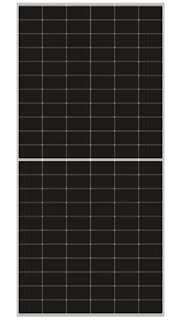
The D-Matrix is a relatively solid product that doesn’t excel in many areas, bar efficiency and power.
Its 650W peak power rating is well above average, but partly as a result, it's significantly heavier and larger than most panels, at 31.9kg and 2.7m².
You can also get a standard 15-year product warranty, and like most of the other panels on this list, its performance warranty guarantees it’ll be at least 87.4% as efficient as it is now after 30 years.
A household with average UK solar irradiance (850kWh per kWp) will generate 553 kilowatt-hours (kWh) per year with a D-Matrix panel – and after 30 years, it’ll produce a minimum of 483kWh per year.
Even its heat resistance is standard among these high-ranking products. The D-Matrix temporarily loses 0.28% of its output with every degree its temperature goes above 25°C, which is good – but here, it’s average.
D-Matrix (NE): key stats
| Panel name | Manufacturer | Efficiency | Power | Product warranty |
|---|---|---|---|---|
| D-Matrix (NE) | DAS Solar | 24.1% | 650 | 15 years |
10. GSM-MH3/132-BHDG750, Grand Sunergy
Efficiency: 24.14%
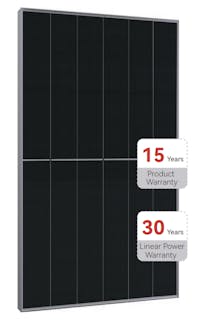
Solar panels are increasingly being given exciting names, especially in the residential sector, but some manufacturers continue to buck this trend – like Grand Sunergy.
The catchily named GSM-MH3/132-BHDG750 is by far the heaviest and largest on this list, weighing in at 38.5kg and taking up 3.1m² on your roof.
Thankfully, its 750W power rating makes up for this, because that's how efficiency works – it's a way of showing how much power you can generate for every square metre of space.
This is one of the most powerful solar panels on the market at the moment; it has the joint-best heat resistance of any model, and it declines more slowly than most.
Its performance warranty states it'll still work at 90.3% of its original efficiency after 30 years, which is one of the top guarantees around.
GSM-MH3/132-BHDG750: key stats
| Panel name | Manufacturer | Efficiency | Power | Product warranty |
|---|---|---|---|---|
| GSM-MH3/132-BHDG750 | Grand Sunergy | 24.14% | 750 | 15 years |
9. TCL Solar E Class HSM-BD72-GC660, SunPower
Efficiency: 24.4%
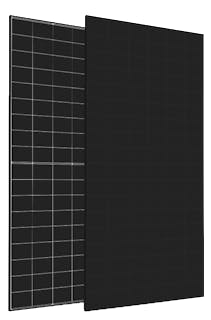
SunPower has a history of producing high-efficiency panels, particularly with its Maxeon line – but this beats all of them.
The 660W bifacial solar panel uses back contact technology, which means moving all the grid-like metal contacts from the front side to the back.
This stops the contacts from blocking any daylight, which allows the panel to turn all the light that hits its front side into electricity.
It also gives SunPower's panel a sleek, all-black appearance, which you can enjoy alongside its 25-year product warranty and a guarantee that it'll function at 88.85% of its initial efficiency after 30 years.
TCL Solar E Class HSM-BD72-GC660: key stats
| Panel name | Manufacturer | Efficiency | Power | Product warranty |
|---|---|---|---|---|
| TCL Solar E Class HSM-BD72-GC660 | SunPower | 24.4% | 660 | 25 years |
8. TOPBiHiKu6, Canadian Solar
Efficiency: 24.4%
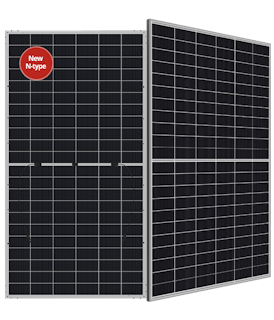
This 660W Canadian-made solar panel is 24.4% efficient, but otherwise it doesn't stand out much. At 32.8kg, it’s unusually heavy for a panel of its 2.7m² size, but your solar panel installer should still be able to get it on your roof without any trouble.
Once it’s there, it should produce at least 87.4% of its initial capacity for 30 years, whatever the weather.
Being Canadian, the TOPHiKu6 is built to endure an enormous 5,400 Pascals of pressure from snow, and a wind load up to 2,400 Pascals, which is also impressive.
The company also has more green credentials than most.
It releases an annual sustainability report that highlights its certifications, CO2 emissions avoided, and how long its solar panels take to offset the carbon footprint they gain during manufacturing.
TOPBiHiKu6: key stats
| Panel name | Manufacturer | Efficiency | Power | Product warranty |
|---|---|---|---|---|
| TOPHiKu6 | Canadian Solar | 24.4% | 660 | 12 years |
7. EVEREST G12R, Huasun
Efficiency: 24.77%
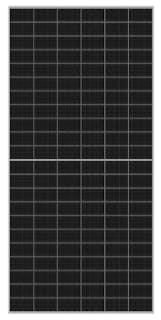
Like many of the panels on this list, this panel comes from China, has a 15-year product warranty, and takes up 2.7m² on your roof.
However, it's far from average. As well as its high efficiency, the EVEREST G12R comes with a 669W power rating and one of the best performance warranties around.
And like Grand Sunergy's offering, this panel comes with a guarantee that it'll work at 90.3% of its efficiency after 30 years.
EVEREST G12R: key stats
| Panel name | Manufacturer | Efficiency | Power | Product warranty |
|---|---|---|---|---|
| EVEREST G12R | Huasun | 24.77% | 669 | 15 years |
6. CIPRO-TN9C72M(H), Talesun Solar
Efficiency: 24.8%
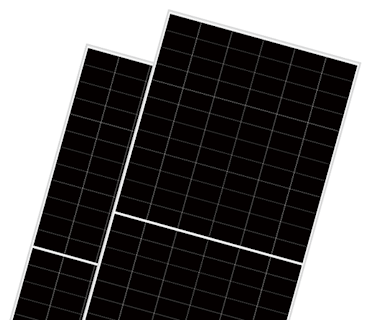
Like many manufacturers on this list, Talesun Solar won't be a familiar name to UK households – but the Chinese company is taking steps in that direction.
The CIPRO-TN9C72M(H)'s 24.8% efficiency rating would've seen it top these charts not too long ago, and it checks all the necessary boxes in other areas.
Customers can enjoy a 15-year product warranty and guarantee that the panel will be 88.85% of its starting efficiency after 30 years, while its heat resistance is better than most.
It's also lighter than every other 2.7m² panel on this list, at a relatively lean 28.1kg.
CIPRO-TN9C72M(H): key stats
| Panel name | Manufacturer | Efficiency | Power | Product warranty |
|---|---|---|---|---|
| CIPRO-TN9C72M(H) | Talesun Solar | 24.8% | 670 | 15 years |
5. Tiger Neo 3.0, JinkoSolar
Efficiency: 24.8%
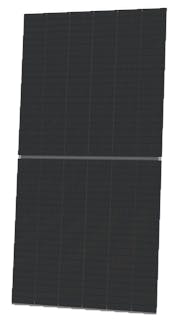
In October 2024, the largest solar manufacturer in the world launched the Tiger Neo 3.0, a residential solar panel with a 24.8% efficiency rating.
The bifacial 670W panel blew the next-most efficient panel in the company’s portfolio – the Tiger Neo 66HL4M-(V), which is 23.51% efficient – out of the water.
Customers will also receive the standard top-tier performance guarantee – 87.4% after 30 years – and a 15-year product warranty.
Plus its heat resistance is -0.26% per degree over 25°C, which is well above the industry average.
Tiger Neo 3.0: key stats
| Panel name | Manufacturer | Efficiency | Power | Product warranty |
|---|---|---|---|---|
| Tiger Neo 3.0 | JinkoSolar | 24.8% | 670 | 15 years |
4. Hi-MO S10, LONGi
Efficiency: 25%
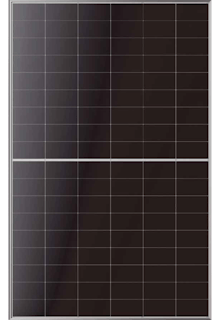
The Hi-MO S10 is the second of four panels on the market with a 25% efficiency rating, and comes with the joint-second lowest power rating on this list: 510W.
It packs a punch for its size, weighing in at 23.5kg and sized at just a hair over 2m².
The S10 also offers the joint-best heat resistance on this list, along with a guarantee that it’ll work at 88.85% of its initial capacity after 30 years.
However, its 12-year product warranty is disappointingly short.
LONGi has experience in making history with efficient panels, and with its Hi-MO X10 Scientist also making waves on 24.8%, the Chinese firm is currently sitting pretty in this section of the industry.
Hi-MO S10: key stats
| Panel name | Manufacturer | Efficiency | Power | Product warranty |
|---|---|---|---|---|
| Hi-MO S10 | LONGi | 25% | 510 | 12 years |
3. GAIA, Belinus
Efficiency: 25%
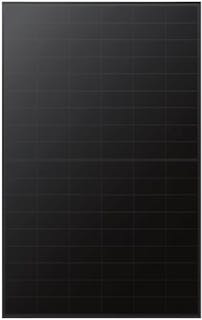
The GAIA, which was surely named after the Greek personification of Earth, is very similar to the Hi-MO S10.
Both panels have the same efficiency, power rating, dimensions, and weight – but this Belgian product has a slight edge.
Belinus uses back contact technology, which gives its panel a sleek appearance, and offers one of the best product and performance warranties in the industry.
Both cover the GAIA for 35 years, which is comfortably longer than any other panels on this list.
GAIA: key stats
| Panel name | Manufacturer | Efficiency | Power | Product warranty |
|---|---|---|---|---|
| GAIA | Belinus | 25% | 510 | 35 years |
2. Neostar 3P54, AIKO
Efficiency: 25%
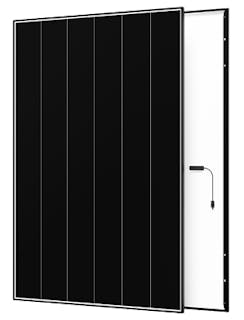
AIKO is the third-largest solar panel manufacturer in the world, and has recently emerged as a strong player in the efficiency stakes.
After becoming one of the few companies to hit the 24% efficiency mark when it launched its ABC White Hole Series panels in 2023, AIKO took the next step.
It gradually improved its Neostar range until, in 2025, it broke the 25% barrier.
This is the only panel on the list that's under 2m² – and because of that, it's also the least powerful, at 500W. That's just how efficiency works.
It's guaranteed to work at 88.85% of its starting capacity after 30 years, which is better than the great majority of performance warranties, and comes with a 15-year product warranty.
Neostar 3P54: key stats
| Panel name | Manufacturer | Efficiency | Power | Product warranty |
|---|---|---|---|---|
| Neostar 3P54 | AIKO | 25% | 500 | 15 years |
1. Black Tiger RCM-700-RDBRCN, RECOM
Efficiency: 25%
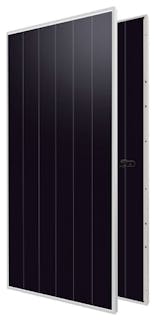
RECOM has created a monster, in the best way possible.
The Black Tiger is the second-heaviest, second-largest, and second-most powerful entry on this list, all after Grand Sunergy's panel.
Like many top-tier companies now, its French manufacturer uses back contact tech to create a sleek, more effective panel, and guarantees it'll be 88.85% as efficient after 30 years.
Customers will also receive a 25-year product warranty and an excellent level of heat resistance.
If you’re wondering how much you could save by getting a solar & battery system, click the button below. Just answer a few quick questions, and we’ll provide an estimate.
Black Tiger RCM-700-RDBRCN: key stats
| Panel name | Manufacturer | Efficiency | Power | Product warranty |
|---|---|---|---|---|
| Black Tiger RCM-700-RDBRCN | RECOM | 25% | 700 | 25 years |
Our methodology
We keep a database of all the best panels produced by the 37 biggest solar manufacturers whose panels are available in the UK, and regularly check their websites – and press releases – for the latest models.
Every time we find a new panel, we go through its datasheet and migrate all the relevant information into our database.
This of course includes the efficiency rating, but also each panel’s product and performance warranties, power rating, watts per m², appearance, heat resistance, size, and weight, as well as where the solar panel is made.
We also look into every manufacturer’s eco-friendly credentials, to see how seriously they take the fight against climate change.
Once we have all of these details, we check the database to see which panels are the most efficient.
Since each manufacturer uses the same technology in all their most efficient models, we’ve decided to only include the best panel from each company, while still mentioning their other designs that perform well.
If you're wondering how much you could save with a solar & battery system, enter a few quick details below and we'll provide an estimate.
Find out how much you can save
What kind of home do you live in?
What’s the most efficient type of solar panel?
The most efficient type of solar panel is a tandem panel made of perovskite and silicon - although it is currently not available for residential use and could be many years away.
Perovskite is a synthetic material based on the crystal structure of a mineral that’s also – confusingly – called perovskite.
Scientists place a layer of this substance on a layer of silicon, and the two work in harmony, with perovskite absorbing light from the blue end of the spectrum, and silicon taking in light from the red end.
Trina Solar, a Chinese company that makes this kind of panel, set a world record in June 2025 by creating a 30.6% efficient model.
With a 360W power rating across a 1.185m² panel, this product would easily top our list – except it hasn’t been released to the public yet, and likely won’t be for years.
Even when it is eventually made available to customers, it’ll probably be expensive for a good while, since it’ll be a premium product.
Is efficiency the most important solar panel factor?
Efficiency is one of the most important factors in deciding which solar panel you should get, but it’s not necessarily the most crucial. A panel's affordability, durability, and power rating also matter immensely.
The majority of top-tier monocrystalline solar panels currently available to households offer excellent efficiency levels, without much difference between them. After all, there are only 0.9 percentage points between the top and bottom of this list.
Even the worst-performing models from the largest manufacturers usually come with at least 20% efficiency, which is good enough for you to save significant amounts on your electricity bills.
Solar panel affordability
Given the extremely small differences in efficiency ratings between all the top-tier solar panels, it’s not worth paying a high premium for a model that’s only slightly superior.
Going for more expensive panels will push back your break-even point if you’re paying upfront, and of course makes it even harder to afford them in the first place.
It’s worth getting the highest quality system for your home, but not if the cost is too great.
Having more efficient panels can theoretically allow you to make the most of your roof space, as you’ll be able to fit more up there. In reality though, the space saved often isn’t enough to squeeze on another panel.
And even if it is, the cost of more efficient panels may well outstrip the savings you’d make with them.
Solar panel durability
Durability is a vital attribute to consider when you’re getting solar panels.
One of the biggest advantages of going solar is the cumulative savings, since the average monocrystalline panel’s lifespan is 30 to 40 years, and they should generate solar electricity throughout that period.
If they need constant or significant repairs, it’ll hit your savings, prolong your payback period, and potentially eliminate your break-even point entirely.
Monocrystalline panels are currently the most durable type of solar panel on the market, so make sure you stick to this model.
However, even the most sturdy solar & battery systems will require maintenance, which is why you should consider signing up for Sunsave Plus and taking advantage of the Sunsave Guarantee.
You’ll get 24/7 monitoring - so if anything goes wrong, we’ll be automatically alerted and then we'll move to fix it as quickly as possible.
You'll also get a free battery upgrade, as well as a free inverter replacement (if required).
The Sunsave Guarantee also comes with downtime protection – which means if your panels underperform for an extended period of time, we'll credit your monthly payments whilst we get your system back to working order.
Last but not least, your system will be insured by Aviva against damage, fire and theft.
Solar panel power ratings
Since you want to generate as much electricity as you can with your solar panels, you’ll naturally want a model with the highest output possible.
Everything being equal, a 450W panel in average UK solar irradiance (850kWh per kWp) will produce 22% more electricity per year than a 350W panel.
However, when it comes to fitting solar panels on a roof, their efficiency is more important, as this measure already factors in their output, as well as their size. After all, a panel’s efficiency is its power rating divided by its size.
For instance, if you have a 400W panel that’s 2m², it would produce 200W per m², and its efficiency would be 20%.
A 600W panel would obviously produce more electricity overall, but if it takes up 3.5m², it would generate 171W per m² – for an efficiency of just 17.1%.
It’s therefore better to check a panel’s efficiency before its power rating, since that will have taken into account its size as well.
This is even more important now, with the ongoing trend of manufacturers making their panels bigger to get more impressive power ratings – sometimes with a negative effect on their efficiency.
Next steps
There are plenty of efficient solar panels available to households at the moment – and there’s not much difference between the best models.
Even below the top tier we discuss in this article, you’ll find countless other panels that can generate a superb amount of electricity, especially for their size.
These days, you should be looking for a panel with at least 20% efficiency – but beyond that, it’s also important to consider the price, durability, and solar maintenance package that comes with it.
If you’re wondering how much you could save by getting a solar & battery system, click the button below. Just answer a few quick questions, and we’ll provide an estimate.
Find out how much you can save
What kind of home do you live in?
Most efficient solar panels: FAQs
Related articles

Written byJosh Jackman
Josh has written about the rapid rise of home solar for the past six years. His data-driven work has been featured in United Nations and World Health Organisation documents, as well as publications including The Eco Experts, Financial Times, The Independent, The Telegraph, The Times, and The Sun. Josh has also been interviewed as a renewables expert on BBC One’s Rip-Off Britain, ITV1’s Tonight show, and BBC Radio 4 and 5.

